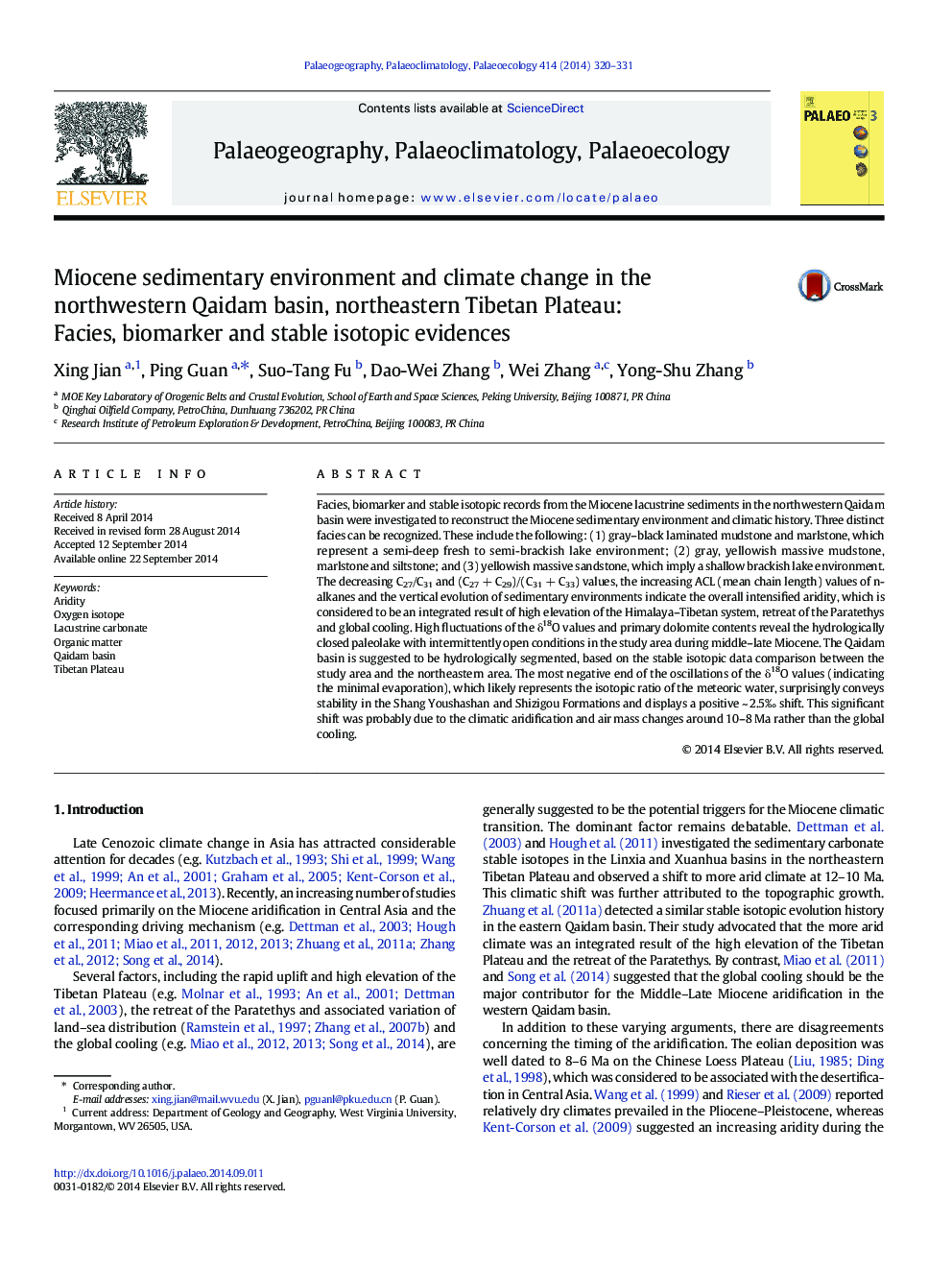| کد مقاله | کد نشریه | سال انتشار | مقاله انگلیسی | نسخه تمام متن |
|---|---|---|---|---|
| 6349985 | 1622176 | 2014 | 12 صفحه PDF | دانلود رایگان |
عنوان انگلیسی مقاله ISI
Miocene sedimentary environment and climate change in the northwestern Qaidam basin, northeastern Tibetan Plateau: Facies, biomarker and stable isotopic evidences
ترجمه فارسی عنوان
محیط رسوبی میوسن و تغییرات آب و هوای حوضه شمالی غربی قیدام، افق تبتی شمال شرق: فاکتور، بیومارکر و اثرات ایزوتوپی پایدار
دانلود مقاله + سفارش ترجمه
دانلود مقاله ISI انگلیسی
رایگان برای ایرانیان
کلمات کلیدی
موضوعات مرتبط
مهندسی و علوم پایه
علوم زمین و سیارات
فرآیندهای سطح زمین
چکیده انگلیسی
Facies, biomarker and stable isotopic records from the Miocene lacustrine sediments in the northwestern Qaidam basin were investigated to reconstruct the Miocene sedimentary environment and climatic history. Three distinct facies can be recognized. These include the following: (1) gray-black laminated mudstone and marlstone, which represent a semi-deep fresh to semi-brackish lake environment; (2) gray, yellowish massive mudstone, marlstone and siltstone; and (3) yellowish massive sandstone, which imply a shallow brackish lake environment. The decreasing C27/C31 and (C27 + C29)/(C31 + C33) values, the increasing ACL (mean chain length) values of n-alkanes and the vertical evolution of sedimentary environments indicate the overall intensified aridity, which is considered to be an integrated result of high elevation of the Himalaya-Tibetan system, retreat of the Paratethys and global cooling. High fluctuations of the δ18O values and primary dolomite contents reveal the hydrologically closed paleolake with intermittently open conditions in the study area during middle-late Miocene. The Qaidam basin is suggested to be hydrologically segmented, based on the stable isotopic data comparison between the study area and the northeastern area. The most negative end of the oscillations of the δ18O values (indicating the minimal evaporation), which likely represents the isotopic ratio of the meteoric water, surprisingly conveys stability in the Shang Youshashan and Shizigou Formations and displays a positive ~ 2.5Ⱐshift. This significant shift was probably due to the climatic aridification and air mass changes around 10-8 Ma rather than the global cooling.
ناشر
Database: Elsevier - ScienceDirect (ساینس دایرکت)
Journal: Palaeogeography, Palaeoclimatology, Palaeoecology - Volume 414, 15 November 2014, Pages 320-331
Journal: Palaeogeography, Palaeoclimatology, Palaeoecology - Volume 414, 15 November 2014, Pages 320-331
نویسندگان
Xing Jian, Ping Guan, Suo-Tang Fu, Dao-Wei Zhang, Wei Zhang, Yong-Shu Zhang,
